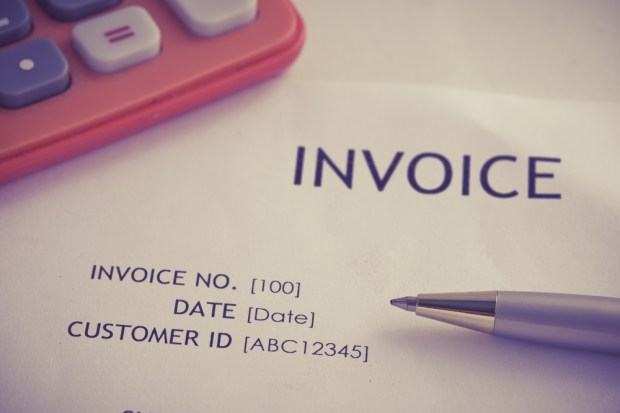Suppliers Faced With New Friction As More Invoices Get Paid Electronically

One of the biggest pro-check arguments in B2B payments today is that the payment rail lets corporate payers get a few extra days off to float cash. It’s the “check’s in the mail” argument that allows businesses to hold onto money just a bit longer between the time they mail the check and the time it’s cashed.
For the receivers of those checks, there’s another major argument in favor of the clunky, manual and insecure payment rail, according to Deluxe Treasury Management Solutions Vice President Gary Cawthorne.
“The beauty of paying with a check is, typically, the check is accompanied with the invoice, and all the information is there in front of you,” he recently told PYMNTS. “You have the invoice, the check, the bank information — everything is there.”
He added that while businesses are moving away from checks toward electronic payments, ePayments don’t necessarily meet all the needs of vendors and suppliers.
“With electronic payments, the payment comes in but doesn’t have the information,” he explained. Further, one ePayment may be for multiple invoices, but the information about which invoices are being paid is “in an email somewhere,” Cawthorne explained. “There’s a big issue about connecting an electronic payment to an invoice,” he added.
Complicating the matter even further are scenarios in which there are exceptions or disputes, in which one electronic payment may be for multiple invoices, but there was a dispute on one of those invoices where full payment was not received.
“Maybe you have one payment for five invoices, but there were some damaged goods or a disputed payment,” the executive said. “So, the electronic payment doesn’t match up against all five invoices.”
As more businesses ditch the check in favor of electronic payments — which, for paying businesses, are often cheaper, more efficient and more secure than paper checks — this hurdle is growing increasingly tall for suppliers’ accounts receivable (AR) departments.
A recent survey from NACHA found that AR executives know this shift is in the works. The report, which was released in June, found accounts receivable professionals expect ACH payments to make up 45 percent of the payments they receive by 2020, while paper checks will decrease, accounting for 34 percent of payments received. Cards and wire transfers are also expected to increase toward the end of the decade, the research found.
As this shift continues, Cawthorne explained that suppliers will have a tougher time being able to actually apply the cash they receive when they get paid.
“Companies may pay electronically because it’s cheaper, but what happens is the accounts receivable department has a problem on the back end in matching the payment, and it takes longer to apply that payment,” he said. “In some cases, you can’t use that cash — you have it in the bank, but you can’t use it until you can apply that payment to the right invoice.”
This is a problem for any business, and Cawthorne said the challenge of reconciliation and matching ePayments to eInvoices can be found across verticals.
“Transportation is one industry that has a big problem, another is healthcare — you have the whole issue of delayed payments,” he said. “People won’t pay until they get paid by the insurance company, for instance. Manufacturing and distribution are also areas that have a problem. Anywhere you have multiple invoices and single payments, and where you have disputes and short-pays.”
It’s also a problem for corporates large and small, the executive added. Deluxe works with financial institutions that then link their own business customers to Deluxe’s services. According to Cawthorne, banks are really perking up to small businesses’ (SMBs) needs in treasury management.
“Especially larger regional banks, all the way up to the largest banks, are really looking at the small business,” he said. “It’s a huge untapped market potential for them. Those small businesses don’t need highly sophisticated treasury management services, but they need … [some] level of treasury management services, because a customer-based solution doesn’t fit all of their needs.”
To address the challenge of eInvoice matching and reconciliation for corporates large and small, Deluxe Treasury Management Solutions recently rolled out upgrades to its offerings. They deploy what Cawthorne explained as “machine learning and artificial intelligence kind of algorithms” that capture electronic payment data, as well as information from email and other platforms, to automatically match invoices to payments data. According to Deluxe, this automated tool can boost straight-through processing rates by up to 95 percent.
It’s complex technology that may have at one time been viewed as necessary only for the largest enterprises with complicated treasuries. But Cawthorne explained that, especially as ePayments adoption grows in B2B payments, SMBs stand to gain from such a solution, too, combined with other capabilities like remote deposit capture and mobile services.
“If I’m a small distributor and I’m delivering steaks to a restaurant, I can take a picture of a check, and I’ve already married the payment to all of the documentation,” he noted. “That payment goes into the bank as I’m driving out of your parking lot.”
